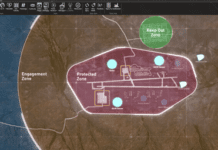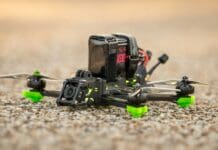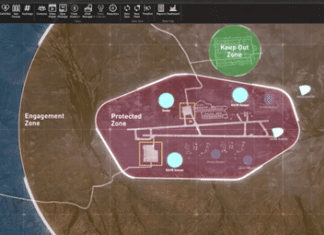This post is also available in:
 עברית (Hebrew)
עברית (Hebrew)
The highly advanced hypersonic missile tracking satellite array tracked its first hypersonic test launch, as reported by the Missile Defense Agency (MDA). The satellites featuring the Hypersonic and Ballistic Tracking Space Sensor (HBTSS) were deployed into orbit in February of 2024, as we recently reported.
Current ground-based systems are limited by the curvature of the Earth and the nature of hypersonic missile flight paths, and so HBTSS is designed to overcome this issue and provide an early warning of potential hypersonic missiles – in-orbit sensors will have an unobstructed view and enable a more accurate and timely interception.
The latest reports show the sensors successfully collected data after launch, and the agency said in a statement that the MDA will continue to assess flight data over the next several weeks. The MDA and SDA currently have 10 missile-tracking satellites in orbit, eight of which belong to the SDA.
According to Interesting Engineering, although the sensors by both agencies were developed through different programs, an upcoming SDA spacecraft release will integrate the capabilities by including the medium-field-of-view sensor found on the HBTSS satellites, which can track fainter targets and send data to interceptors.
The plan is for the constellation to eventually consist of 100 satellites that will provide global coverage of advanced missile launches. SDA Director Derek Tournear said back in April that coordinating tracking opportunities for the satellites is challenging because they have to be positioned over the area of the missile tests, and that in addition to tracking routine Defense Department test flights, the satellites also scan global hot spots for missile activity as they orbit the Earth.
The flight tracked for the test was the maiden voyage of MDA’s Hypersonic Testbed, HTB-1, which serves as a platform for conducting different hypersonic experiments and testing advanced components.
The MDA’s director Lt. Gen. Heath Collins said in a statement: “This test was a huge success for MDA and our partners, marking the beginning of an affordable test bed to conduct hypersonic experiments. HTB-1 represents a significant step forward in hypersonic testing capability… HTB will allow the U.S. to pursue a broad range of state-of-the-art technologies able to operate reliably in hypersonic flight environments.”


























